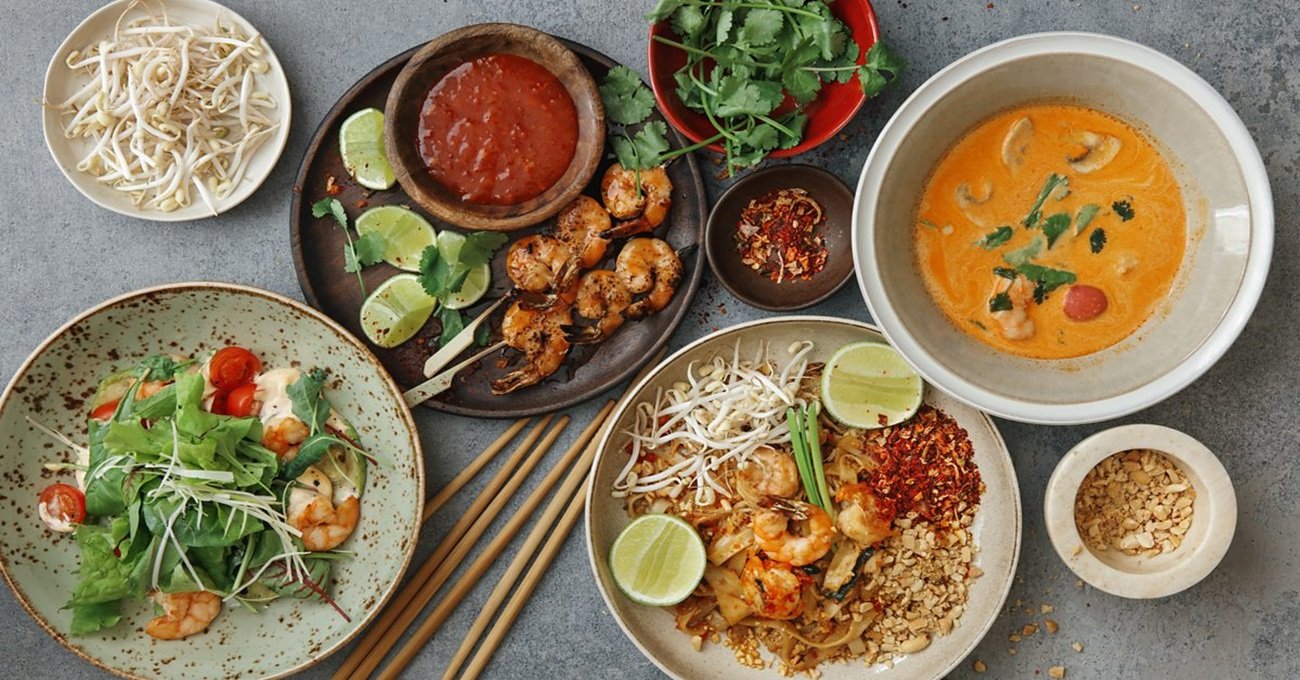Thai food : Journey Through Flavor and Tradition
Best Thai Food
Thai food, a culinary art that’s as vibrant and diverse as Thailand’s culture itself, stands out on the global stage for its emphasis on fresh ingredients, complex flavors, and a balance that caters to all five taste senses: sweet, sour, salty, bitter, and spicy. This cuisine, deeply rooted in Thailand’s history, geography, and culture, offers a palette of flavors that has enchanted food lovers around the world.
A Brief History of Thai Cuisine
The history of Thai food is a tapestry woven from the threads of many cultures. Influences from Chinese, Indian, and Portuguese culinary traditions have been integrated over centuries, creating a unique cuisine that is distinctly Thai. The introduction of chili from Portuguese traders in the 16th century marked a significant turn, transforming the flavor profile to the spicy palate Thai food is famous for today.
The Philosophy Behind Thai Cooking
At the heart of Thai cuisine lies a philosophy of balance. A single meal strives to achieve a harmonious blend of spicy, sour, sweet, salty, and bitter. This balance is not only about taste but also about health, with Thai cooking emphasizing fresh, nutritious ingredients that promote well-being.
Key Ingredients in Thai Cuisine
Thai food is renowned for its use of fresh herbs and spices, including lemongrass, galangal, coriander, and kaffir lime leaves. These ingredients provide a burst of flavor and aroma that is unmistakably Thai. Coconut milk softens the heat of chilies, while fish sauce adds a layer of umami complexity.
Iconic Thai Dishes
No discussion of Thai food would be complete without highlighting its most iconic dishes. Tom Yum Goong (spicy shrimp soup), Pad Thai (stir-fried noodles), and Green Curry are just a few examples that showcase the intricate balance of flavors characteristic of Thai cuisine. Each dish offers a unique taste experience, reflecting the regional diversity of Thailand.
Regional Variations of Thai Food
Thai cuisine varies significantly from the north to the south. Northern Thai food, known as Lanna cuisine, features sticky rice and milder flavors. In contrast, southern Thai cuisine packs a punch with its liberal use of spices and coconut milk, reflecting the coastal region’s abundance of seafood.
The Global Appeal of Thai Food
Thai food has transcended its national boundaries to gain popularity worldwide. Its ability to cater to different palates while maintaining its unique taste profile has led to the opening of Thai restaurants across the globe. The cuisine’s appeal lies in its versatility, offering something for everyone, whether one prefers mild or fiery dishes.
Thai Street Food: A Culinary Adventure
Street food is an integral part of Thai food culture, offering an authentic glimpse into the heart of Thai cuisine. From bustling markets to street corners, vendors serve up an array of dishes that are fast, delicious, and affordable. Sampling street food is a must-do for any food lover visiting Thailand.
Thai Food as a Cultural Ambassador
Thai food serves as a cultural ambassador, introducing people around the world to the flavors and traditions of Thailand. It’s a cuisine that tells a story, one of a nation’s history, geography, and people. As Thai food continues to gain international acclaim, it fosters a deeper appreciation for Thailand’s rich cultural heritage.
Conclusion Thai food
Thai cuisine, with its dazzling array of flavors and textures, stands as a testament to Thailand’s rich cultural tapestry and culinary innovation. It transcends geographical boundaries, bringing the warmth, complexity, and vibrancy of Thai culture to tables around the world. The enduring charm of Thai food lies in its ability to strike a perfect balance between the five key tastes, making each dish a harmonious blend that appeals to diverse palates. Its global appeal is a reflection of its versatility, welcoming everyone from the spice enthusiast to the lover of mild flavors. As Thai cuisine continues to captivate food lovers globally, it does more than just satiate hunger—it bridges cultures, fosters connections, and tells the story of a nation through every bite. The legacy of Thai food is not just in its taste but in its ability to unite people through the universal language of delicious, heartfelt cooking.



